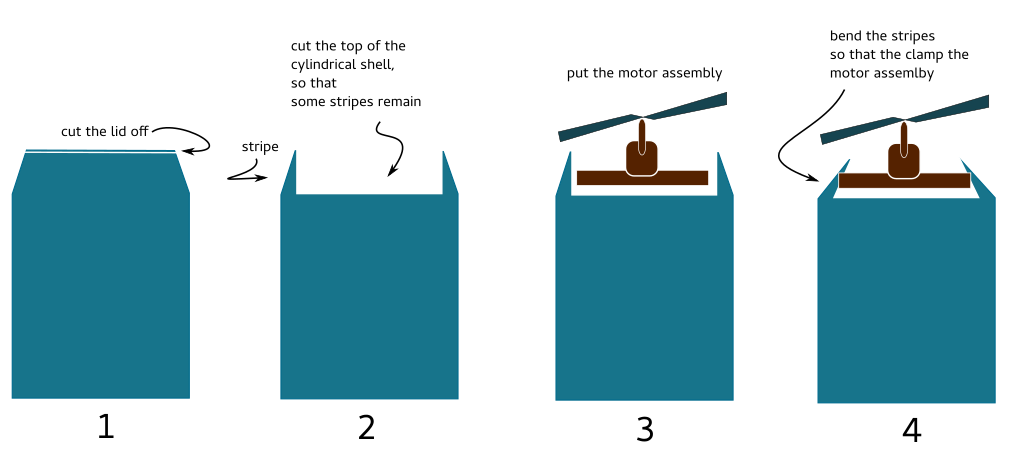-
Continuing on
05/02/2017 at 03:27 • 0 commentsA lot of time has passed since I started this.
My vision and philosophy changed. I moved away from Drone to Ornithopter. But I consider a system like this can still be a transition.
The modern drone industry surrounds the age old concept of a propeller. Such a design doesn't appear in nature. Right now I am more interested in working with Ornithopter designs. That includes synthetic muscles.
-
Got my motors
10/15/2015 at 01:21 • 0 comments -
The Structure
09/24/2015 at 20:33 • 0 comments
I am going to use the 330 ml soda can as the first structural basis of the system. I have highlighted in the image how I plan to do this.
- First cut off the lid of the 330 ml bottle
- Then cut the conical part of the shell of the bottle so that some (slant vertical) stripes / petals remain
- Add the motor assembly
- bend the strips / petals so that they clamp on the motor assembly.
Question : what is the best shape of the petals?
Answer: This is dependant on the amount of vibration. In order to answer that, we need to know how fast the motor is spinning, the static mass of the motor + rotor, and then the amount of unbalance that appears in the rotor, so that we can create a kinamatic model.So I first need to calculate what kind of a rotor I need.
My motor details are (I will upload as soon as I get the motor) :
I ordered cheap DVD motors, I will update as soon as I find some info on them. The worst case scenario is 1800 RPM.
I do not know how massive they are.
The Betz law on rotorcrafts says that the Force exherted on the air by the rotor ( = the force acting on the craft as a reaction from the air) is given by- - Air Density x Rotor Area x Speed of wind at the rotor x (speed of wind in front of the rotor - speed of wind behind the rotor)
Assuming windstill, this would mean, the lift is given by the rotor pitch and Rotor Area. The actual amount of lift generated by a propeller is very complex. Nonetheless there is another way to compute the same :
- F = ω² L² l ρ sin²ϕ
ω is the angular velocity, L is propeller width, l is the depth of the helix the propeller describe. So now I can look in ebay, and find a propeller.
 Sean S Con
Sean S Con
